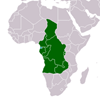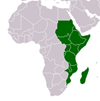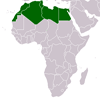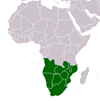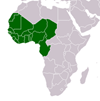An Ex post Economic Assessment of planted Forages in West Africa
An Ex post Economic Assessment of planted Forages in West Africa
In the late 1970s and early 1980s the International Livestock Centre for Africa (ILCA) and its national research partners were instrumental in developing and promoting the concept of planting forage legumes in an attempt to help agropastoralist in West Africa alleviate the feed stress experienced by their ruminant animals during the dry season. The 'fodder bank' was one (but by no means the only) method developed, whereby an area of the farmer's land was fenced and planted to Stylosanthes or other legumes, which could be used for strategic feeding during the early dry season. Some cropping systems were also developed in which a cereal was subsequently planted in the fodder bank to make use of the nitrogen fixed by the legume. Research funds were spent on this activity until 1993, and various studies have shown adoption of this technology in a number of countries of West Africa, although no comprehensive study of the adoption of this technology had yet been done. In 1995, ILCA and ILRAD (the International Laboratory for Research on Animal Diseases) combined to form a new institute, the International Livestock Research Institute (ILRI). An ex post assessment of the fodder bank technology in West Africa was carried out to document the impact that ILRI, its national partners and other organisations have had and continue to have at the farm level, which could be used to demonstrate the value of investment in agricultural research programmes. Accordingly, a study was designed with two main activities: a literature survey to quantify production impacts of the foldder bank technology, and the commissioning of a consultant to travel extensively in the region to collect up-to-date information on the number of adopters of the technology from national agricultural research and extension programmes in the region. To date, about 27,000 adopters have been identified growing forage legumes on some 19,000 ha in the 15 countries for which we currently have information. Using modest estimates of production impact of forage legumes on meat and milk production from a herd simulation model and on maize, millet and sorghum grain and residue from the literature, commodity price data, elasticities of supply and demand, and estimates of research costs were combined in an economic surplus model with the number of adopted hectares of forage legumes that could reasonably be attributed to the activities of ILRI and its national partners. The baseline analysis indicates that on an expenditure of research resources of just over US$ 7 million, the total net benefits to society that had accrued up to 1997 amounted to US$ 16.5 million, with an internal rate of return of some 38%. These figures may be conservative, for the adoption data are likely to be conservative and the estimated production impacts are modest. Various sensitivity analyses are carried out to test the robustness of these estimates of impact. Partly because research resource expenditure by ILRI on this technology is now zero. projecting adoption trends to the year 2014 results in at least a doubling of the estimated total benefits realised to date. In may places, the problems facing farmers wishing to adopt forage legumes are serious.
CITATION: International Livestock Research Institute (ILRI). An Ex post Economic Assessment of planted Forages in West Africa . Nairobi : International Livestock Research Institute (ILRI) , 1999. - Available at: https://library.au.int/frex-post-economic-assessment-planted-forages-west-africa-3

